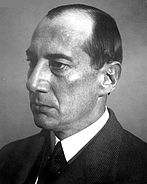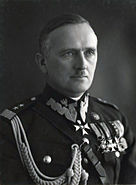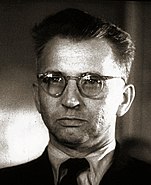
Col. Józef Piłsudski with his staff in front of the Governor's Palace in Kielce, 1914

Col. Józef Piłsudski and his officers, 1915

Pilsudski in Otwock, 1915

II Brigade of the Polish Legions in Volhynia
Polish Legions (Polish Legiony Polskie) was the name of Polish armed forces created in August 1914 in Galicia. Thanks to the efforts of KSSN and the Polish members of the Austrian parliament, the unit became an independent formation of the Austro-Hungarian Army. They were composed mostly of former members of various scouting organisations, including Drużyny Strzeleckie and Związek Strzelecki, as well as volunteers from all around the empire. Józef Piłsudski in his order of August 22, 1914 declared the formation of the Legions. The Austrian government having jurisdiction over the area officially agreed to the formation August 27.
Initially the Polish Legions were composed of two legions: the Eastern and the Western, both formed August 27. After a Russian victory in the Battle of Galicia the Eastern Polish legion refused to fight on behalf of the Austro-Hungarian side against Russia and was disbanded on September 21. On December 19, the Western legion was transformed into three brigades.
- I Brigade of the Polish Legions under Józef Piłsudski, formed in mid-December
- II Brigade of the Polish Legions under Józef Haller de Hallenburg, formed between mid-December and March (sources vary)
- III Brigade of the Polish Legions under Zygmunt Zieliński and later Bolesław Roja, formed on May 8, 1915
- Artillery Battalions-served in I, II, and III Brigades
- Cavalry Regiments-1st served in I Brigade; 2nd served in II Brigade; 3rd served in III Brigade
- Infantry Regiments-1st, 5th, 7th served in I Brigade; 2nd, 3rd served in II Brigade; 4th served in both II and III Brigades; 5th, 6th served in III Brigade
The commanders of the Legions were:
- Gen. Karol Trzaska-Durski (September 1914 – February 1916)
- Gen. Stanisław Puchalski (until November 1916)
- Col. Stanisław Szeptycki (until April 1917)
- Col. Zygmunt Zieliński (until August 1917)
The Legions took part in many battles against the forces of Imperial Russia, both in Galicia and in the Carpathian Mountains. Initially both the number of troops and the composition of units were changing rapidly. This changed after Piłsudski resigned his post in September 1916 and the Polish Legions were renamed to Polish Auxiliary Corps (Polski Korpus Posilkowy). In June 1916 the unit had approximately 25 000 soldiers.
After the Act of November 5 and the creation of puppet Kingdom of Poland, the Polish Legions were transferred under German command. However, most of the members refused to swear allegiance to the emperor and were interned in Beniaminów and Szczypiorno (Oath crisis). Approximately 3 000 of them were drafted into the Austro-Hungarian army or the German Polnische Wehrmacht and sent to the Italian Front, while approximately 7 500 stayed in the Austrian Polish Auxiliary Corps. After the war the officers of the Polish Legions became the backbone of the Polish Army.
Photo Gallery of Polish Legion members[]
Battles[]

Operations of the Polish Legions
- Battle of Nowy Korczyn (23–24 September 1914)
- Battle of Anielin-Laski (October 21–October 26, 1914)
- Battle of Mołotkowo (October 29, 1914)
- Battle of Krzywopłoty (17–18 November 1914)
- Battle of Marcinkowice (5–6 December 1914)
- Battle of Łowczówek (December 22–December 25, 1914)
- Battle of Pustki (2 May 1915)
- Battle of Konary (May 16–May 25, 1915)
- Battles of Rafajłowa, Kirlibaba and Rarańcza (June 13, 1915)
- Battle of Rokitna (15 June 1915)
- Battle of Jastków (July 29–July 31, 1915)
- Battle of Kostiuchnówka (July 4–July 6, 1916)
- Battle of Krechowce (24 July 1917)
- Battle of Rarańcza (15–16 February 1918)
Officers who served in the Polish Legions[]
- Leon Berbecki
- Zygmunt Berling
- Władysław Bortnowski
- Walerian Czuma
- Bolesław Wieniawa-Długoszowski
- Gustaw Orlicz-Dreszer
- Bolesław Bronisław Duch
- Karol Durski-Trzaska
- Kazimierz Fabrycy
- Emil August Fieldorf
- Stanisław Grzmot-Skotnicki
- Tadeusz Jordan-Rozwadowski
- Michał Karaszewicz-Tokarzewski
- Tadeusz Kasprzycki
- Franciszek Kleeberg
- Tadeusz Klimecki
- Bronisław Prugar-Ketling
- Alojzy Wir-Konas
- Wincenty Kowalski
- Marian Kukiel
- Kazimierz Mastalerz
- Henryk Minkiewicz
- Mieczyslaw Norwid-Neugebauer
- Leopold Okulicki
- Kazimierz Orlik-Łukoski
- Wilhelm Orlik-Rückemann
- Witold Pilecki
- Tadeusz Piskor
- Władysław Belina-Prażmowski
- Bronisław Rakowski
- Bolesław Roja
- Juliusz Rómmel
- Stanisław Grzmot-Skotnicki
- Piotr Skuratowicz
- Edward Rydz-Śmigły
- Mieczysław Smorawiński
- Kazimierz Sosnkowski
- Mieczysław Boruta-Spiechowicz
- Julian Stachiewicz
- Wacław Stachiewicz
- Kazimierz Stamirowski
- Aleksander Stawarz
- Zygmunt Bohusz-Szyszko
- Wiktor Thommée
- Władysław Wejtko
- Józef Olszyna-Wilczyński
- Jan Włodarkiewicz
- Józef Zając
- Ferdynand Zarzycki
- Marian Januszajtis-Żegota
- Juliusz Zulauf
- Michał Rola-Żymierski
See also[]
| Wikimedia Commons has media related to Polish Legions in World War I. |
- Polish Legions (disambiguation)
- Tomasz Arciszewski
- Julius Kolbe-father of Saint Maximilian Kolbe
- Stanisław Skarżyński
- Władysław Wejtko
- Czesław Zbierański
- Association of the Polish Youth "Zet"
- Blue Army (Poland)
- First Cadre Company
- Greater Poland Uprising (1918–1919)
- Kingdom of Poland (1916–1918)
- List of Polish divisions in World War I
- My Pierwsza Brygada
- Polish Auxiliary Corps
- Polish I Corps in Russia
- Polish II Corps in Russia
- Polish 1st Legions Infantry Division
- Polish Military Organisation
- Polish Rifle Squads
- Polnische Wehrmacht
- Riflemen's Association
- Union of Active Struggle
The original article can be found at Polish Legions in World War I and the edit history here.





































